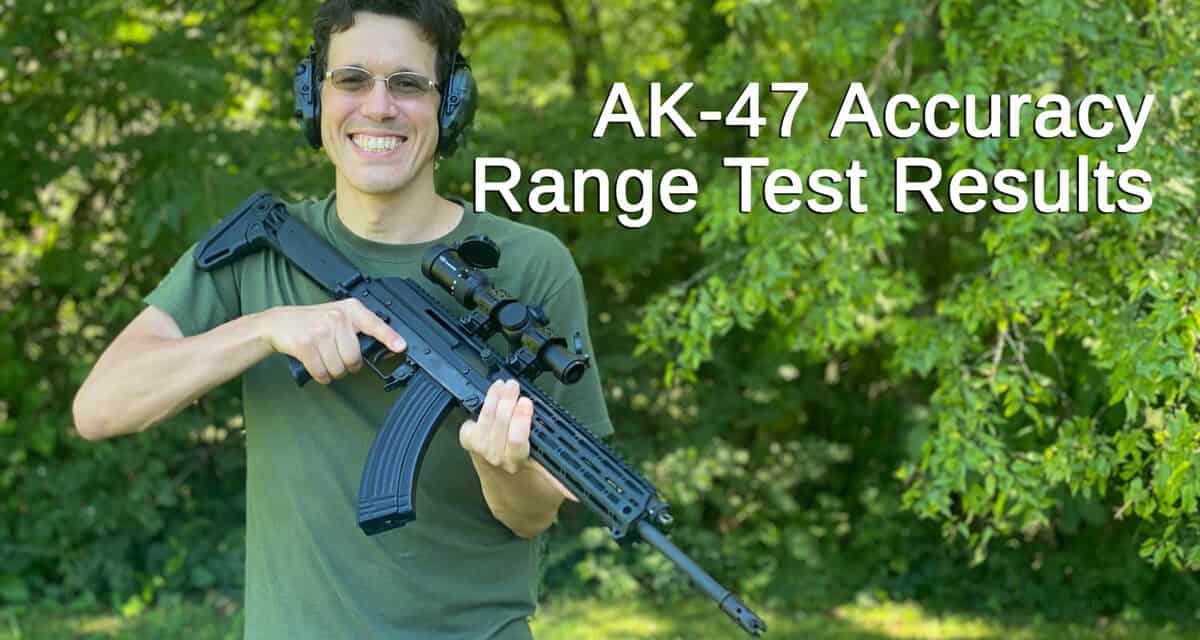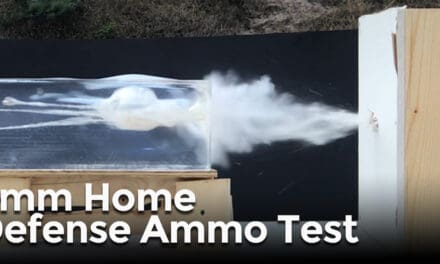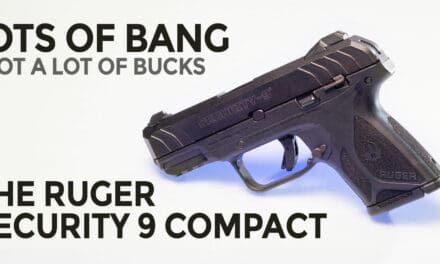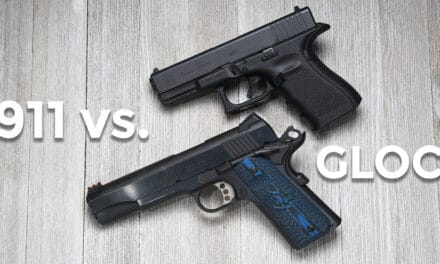7.62x39mm cartridge, commonly known as 7.62 Soviet, is one of the most common rounds in the world. We use it in carbines, automatic rifles, light machine guns, and even hunting bolt actions. For about 25 years, it was less expensive as military surplus than any other centerfire rifle ammunition. Now that that cheap surplus from Comblock countries is mostly gone, more of it is being produced by other countries. The quality of the ammunition and the quality of guns chambering it, have improved. But can the round designed for high volume of fire also be accurate?
Are AK-47’s and is 7.62×39 Ammo Accurate?
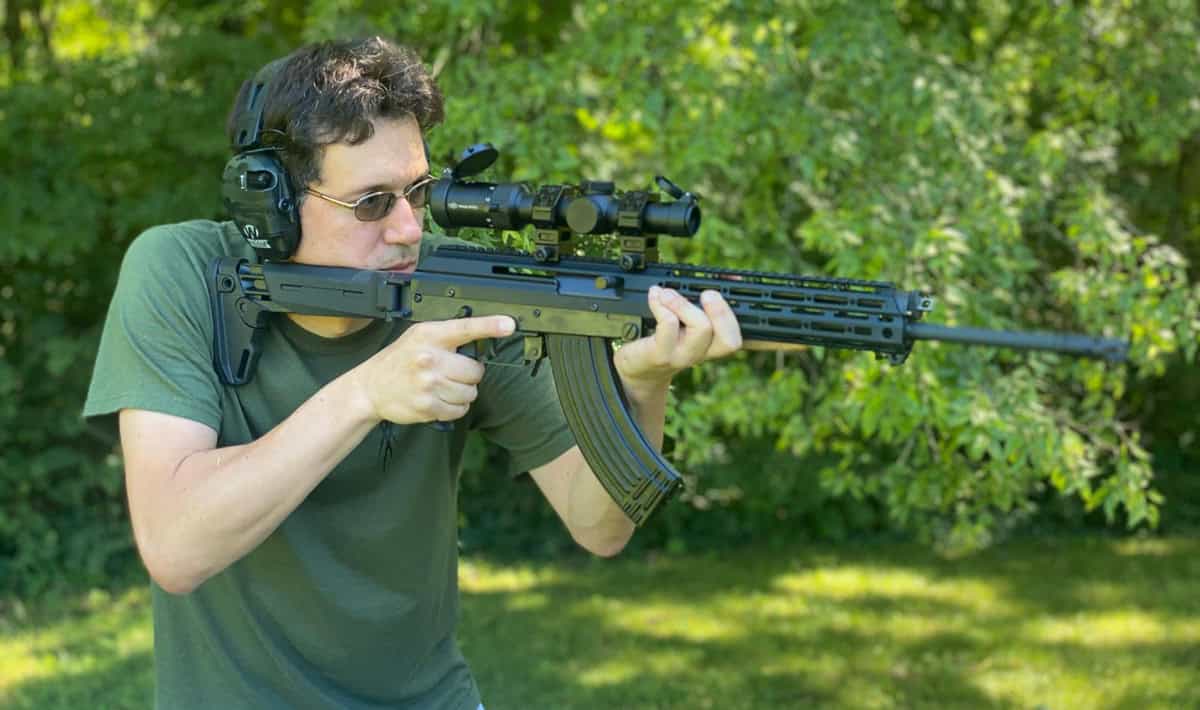
From 50-yards, we found four major commercially available ammo options grouped at about two to three inches. We tested Belom 7.62×39, Tela Impex, Geco, and PMC 123 grain loads.
At 100 yards, our group sizes doubled. At 300 yards, we found our spread increased again with our best performing ammo (Belom) returning a 5.5″ x 6″ spread.
Is that accurate? It’s not awful. Is it great? That’s certainly something shooters can debate. For comparison’s sake, the U.S. military conducted testing in the 1980’s that pit the AK-47 versus the 5.56×45 firing M16. The test results indicated the rifles and corresponding calibers were even out to 200 yards. From beyond 200 yards, the M16 enjoyed an advantage.
The 7.62×39 Revolution
Adopted at the tail end of WW2, when the USSR was scraping the bottom of the manpower barrel, 7.62×39 ammo was originally intended for the SKS carbine. A half-pound lighter than the M44 carbine, the SKS held twice as much ammunition and had significantly less recoil. The theoretical loss of effective range wasn’t much of a problem in practice.
In Comes the AK
By the 1950s, Mosin rifles, SKS and both 7.62×39 submachine guns, PPSH and PPS, were being phased out in favor of the newest contender, AK47. Even lighter than SKS, AK47 used 30-round magazines and had the option of automatic fire. It was, in effect, the Soviet answer to STG44, but better. Lighter by about 25% despite the most common early model having milled receivers, AK47 and STG44 had only three common features, long stroke gas operation, curved 30-round magazines holding intermediate power ammunition, and the overall shape. Bolt locking methods, magazine retention, recoil spring location, and trigger mechanisms were all quite different. The Soviet cartridge, while only slightly faster with 100 feet per second gain with the same weight 123 grain bullet, was more tapered, leading to the characteristically curved magazines.
While this cartridge supplanted 7.62×25 Tokarev and 7.62x54R in hand-held small arms, it ended up with only a small niche in squad automatic. RPD belt fed didn’t last in Warsaw Pact armies, and RPK was only a heavy barrel version of AK47 with 40 round box and 75 round drum magazines.
Long-range sniping remained the domain of the full power 7.62x64R, while submachine guns shrunk around the much milder 9×18 Makarov cartridge. The entire lineup of automatic rifles used x39 and, with the conspicuous exception of Russia, most third-world AK users still standardize on that round. Several Western-aligned AK users have gone to 5.56mm, but the canonical AK and AKM rifles still use x39. Why?
Economics of AK-47 Ammo versus Brass-Cased Options
The main reason is economics: steel case, mild steel bullet cartridges are fairly cheap. They have been produced in vast quantities. Pre-1990, most Comblock x39 was corrosive — lousy for barrels, great for primer shelf life. Bolt, barrel, and the piston attached to the bolt carrier were usually chrome-lined, reducing the rust problem. When you have the safety on, the AK47 is fairly well sealed against dirt. Being over-gassed by design, AKs have a very strong extraction cycle. Prominently conical steel case both eases extraction and resists tearing when yanked out of the chamber abruptly.
The downsides of this design are quite obvious: considerable dispersion on automatic fire, limited accuracy in semiauto (not helped by shot sight radius). Looking at the quality of training received by Soviet troops, those are entirely acceptable compromises. In particular, firing in short bursts makes up in part for errors in range estimation as the barrel rises. After World War II, the USSR adopted some infantry doctrines from Germany, in which longer-range fire was done by snipers and machine gunners, while infantry en masse tried to close in. For that, the nominal 300 meter cartridge made sense.
For the American shooter, the equivalent 330 yard intended range makes sense also: few of us hunt or shoot for recreation further than that. Self-defense situations involve drastically shorter ranges.
Inconsistent 7.62×39 Range Results
Unlike Combloc military, US shooters put a greater emphasis on accuracy. A wide variety of rifles is available for this caliber, from tight CZ527 bolt action with a set trigger to a loose AK made with mostly surplus parts in Romania. An equally wide variety of ammunition is available, from ancient corrosive surplus ball to precise Federal hunting loads. I tried to make an encompassing study of accuracy of half-dozen loads in five different rifles, but the amount of testing required would have been prohibitively extensive. Worse, I wasn’t getting consistent results firing consecutive strings from the rifle rifles with the same ammunition.
The same cartridges would show 2MOA and 5MOA during consecutive courses of fire. On the plus side, every cartridge worked reliably with every gun (MM10x, vz58, cz527, AKM, ARAK21), except for light strikes with Belom FMJ in our CZ527. I had to back up and make a more limited study with a single rifle, MM10x+ and two shooters to control the variations between marksmen.
AK-47 Accuracy Testing
I did my test firing at 50 yards from a sandbag. We topped the rifle, a new production MM10x+ with a Hi-Lux 1-8x FFP scope.
Results of several 5-shot strings at 50 Yards:
- Belom: 1.3-2.2″
- Geco: 2.2-2.8″
- PMC: 1.9-2.2″
- Tela: 2.5-2.7″
100 Yards Out
To improve the statistical significance of the results, we went back to 100 yards and my friend, a veteran of 101st Airborne, shot ten-round strings at foot-wide steel. He fired them at a brisk pace, trying to illustrate how this rifle would be realistically used. The solid impact zone 3.5″ wide by 4″ high showed Belom to be the clear winner. Honorable mention goes to Tela Impex, the only steel case load in the test: it did reasonably well for the price, and was as reliable as the more expensive brands.
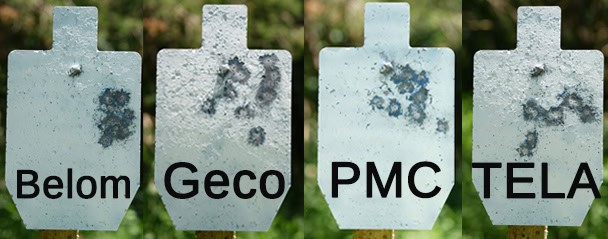
Later, I had an opportunity to test several brands of 7.62×39 with an AR15 rifle chambered for it: the results were nearly identical to 10x+ groups, with one addition. Norma Tactical FMJ ammunition consistently grouped just under 2MOA, eclipsing others in consistency. According to M+M testing, that’s consistent with their own tests.
The 12″x20″ silhouette target is a fair representation of the average torso side. With a 25 yard zero on MM10x or AR15, the trajectory tops out at 6 inches at 150 yards, dropping to 6 below at 300 yards, well within the torso sighted with center mass aim.
300 Yards Out
At 300, Belom FMJ dispersion would be around 5.5″ horizontally and 6″ vertically from the point of aim, still fitting within the silhouette. You should limit less accurate loads to 200-250 yard guaranteed hits with a competent rifleman and no wind. Enter target movement, wind, and low contrast camouflage uniforms — we can see that a 300 yard first shot hit is less a guarantee and more an aspiration. The same load at 200 yards pretty much guarantees a hit.
Other AK-Options
It’s no surprise that the USSR went to 5.45×39, a lighter and far more accurate cartridge. The US military skipped the short 7.62 automatic rifle step entirely, if we don’t count the far weaker M1 carbine. In the hands of trained troops, 5.45mm and 5.56mm are far more effective. However, the old 7.62×39 works pretty well up close, so long as you use modern expanding ammunition for full terminal effect. Statistically, non-military violent confrontations occur at close ranges where reliability trumps accuracy. All four of these loads are plenty accurate for training. Belom, Geco, and PMC have the additional advantage of using Boxer primed brass suitable for reloading, should you be so inclined.

